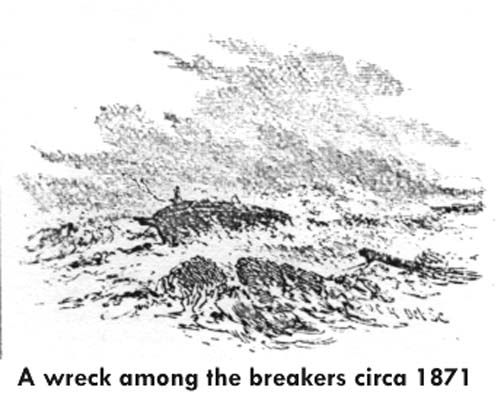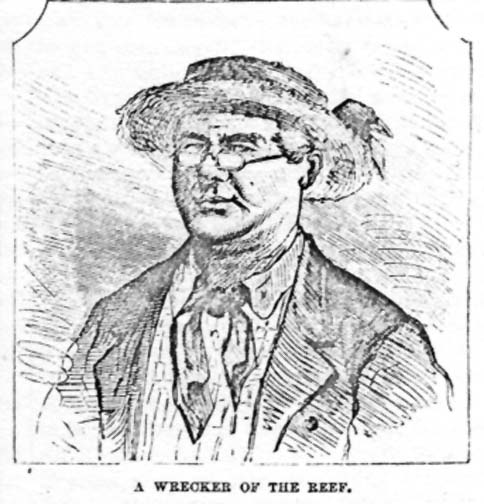|
Page 2 By Jerry Wilkinson [We continue with Dr. J. B. Holder's published
papers of his experiences in the Florida Keys in 1860 and 1861. He has
completed his dissertation of farming and a lengthy explanation of Keys
birds. We join him continuing his voyage. JW]
" This picturesque island has a few of the old houses remaining that were built during the Indian war. At one time the whole place was burned, and was the scene of a fearful massacre. The present proprietor [William Bethel] of the island, now living here was one of the few who escaped with their lives. It was the old story, whisky and close bargains. The Indians were incensed, and came in a body, burning and destroying. There was, however, one notably exception, the family of Mr. [Charles] Howe, who had always treated the Indians with kindness and fairness. They were not harmed, though the savages who had made the attack were insane liquor stolen from the stores, and ready for any act of cruelty. "Dr. Perrine, a gentleman who had located here for the purpose of pursuing studies in natural history, was burned to death in his house, his family escaping by boats. We are led to the end of the island, and shown where the savage Seminole warriors crept softly from their canoes in the darkness to ply the fire-brand and tomahawk, and to 'frighten the isle from its propriety' with their terrible war-whoop. Near by was an ambitious-looking slab, covering a brick tomb. [I believe this is the only account describing Housman's tomb being of brick.] Considering the result of the incumbent's dealing with the Indians, one is apt to reflect upon the old adage, viz. 'Such is life.' The inscription which we found written on the slab is the following: Here lyeth the body of Capt. Jacob Houseman, who died by accident. To his friends he was sincere, to his enemies kind; to all men faithful. [The slab is now on Lignum Vitae Key.] " In often times, when cotton ships were frequently ashore on the Reef, and wreckers were numerous, this island resounded to the high reveling of its frequenters. The large storehouse was made redolent with fumes of Jamaica rum, and resonant with tones of the violin. Jig dances and clog dances and walk arounds, checkers and old sledge, were their amusements. Pableau is a good violinist, and now, responsive to a loud from interested islanders, who had collected at the old store, he furnished music to a rehearsal of the old time scenes. "Among the residents was an old hulk, who had
been driven ashore here years ago, and now lived on Lignum-vitae Key, near
by, where he raised a few water-melons, and so kept hunger from his door,
selling his produce to dealers in Key West. "We were quite amused at a scene which we encountered on our first landing; but were told that it was of almost daily occurrence. A brace of Indian pullets -- Aranus giganteus-- [limpkin] alighted on a tree, when forthwith several women sallied out and 'drew bead' upon them. The lucky ones bagged the game and withdrew, wringing the necks, and resuming work with an air of practiced hands. "From Indian Key to Virginia Key and Cape Florida, the extreme eastern point, the island are separated by wider and deeper channels, and here it became quite evident that so much cable would be required between the keys nothing would be gained by adopting this route. The survey was rapidly made from here. At Cape Florida light we anchored, after a two week's sojourn on the waters of the Reef. In our boats we proceeded across the sound, seven miles, to the mouth of the Miami River, at the southernmost extremity of Florida, where we met the overland party in camp at Old Fort Dallas." The above are the highlights of the cultural portions of Dr. Holder's first paper. In his second paper he concentrates on the Miami/Cape Sable area, the third paper Fort Taylor and Key West, the fourth, fifth and sixth papers the Fort Jefferson/Dry Tortugas area. There are excellent concentrations of the flora and fauna of these areas. These were all Monroe County property at the time. JW Return to Page 1, or |




